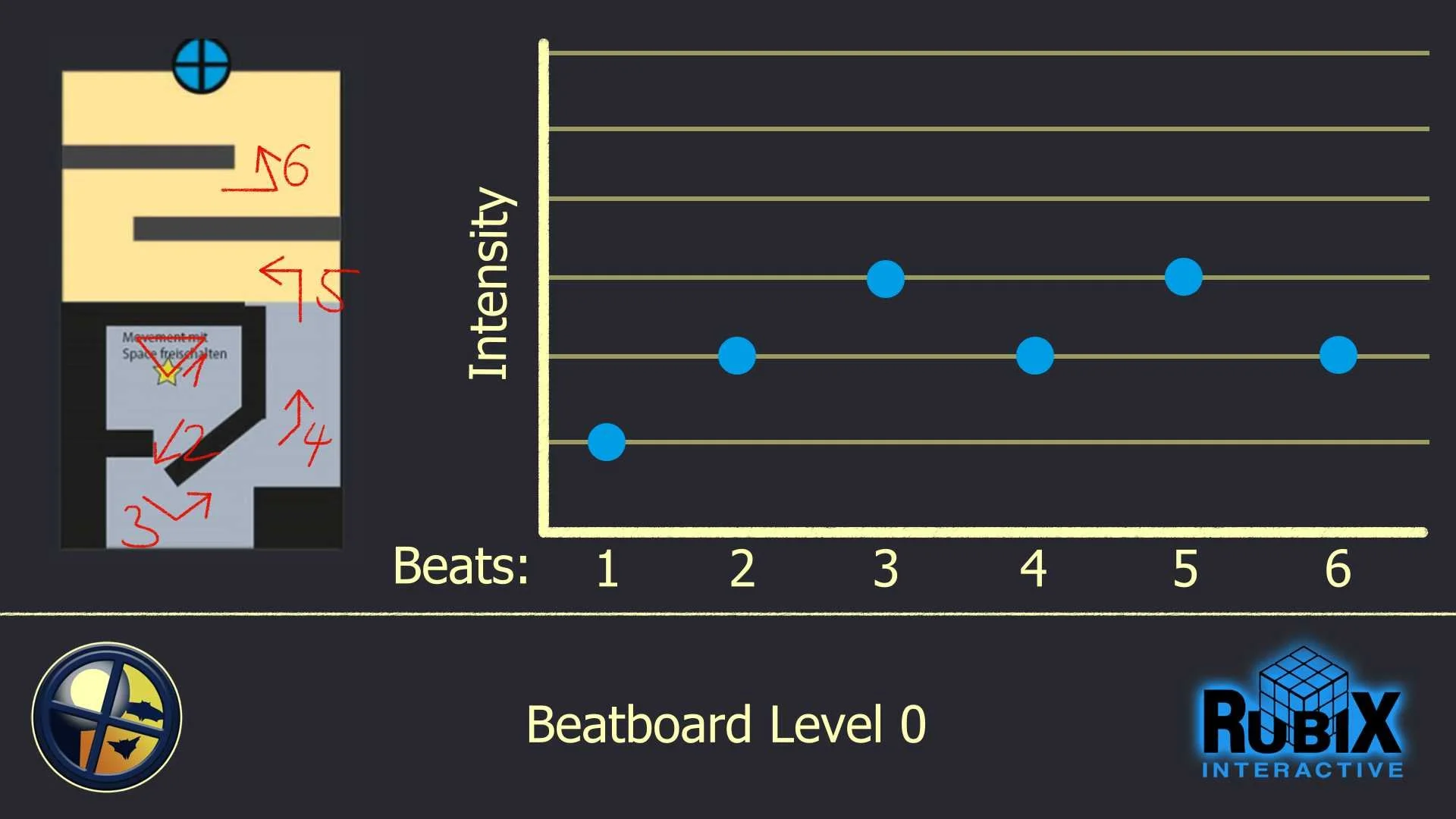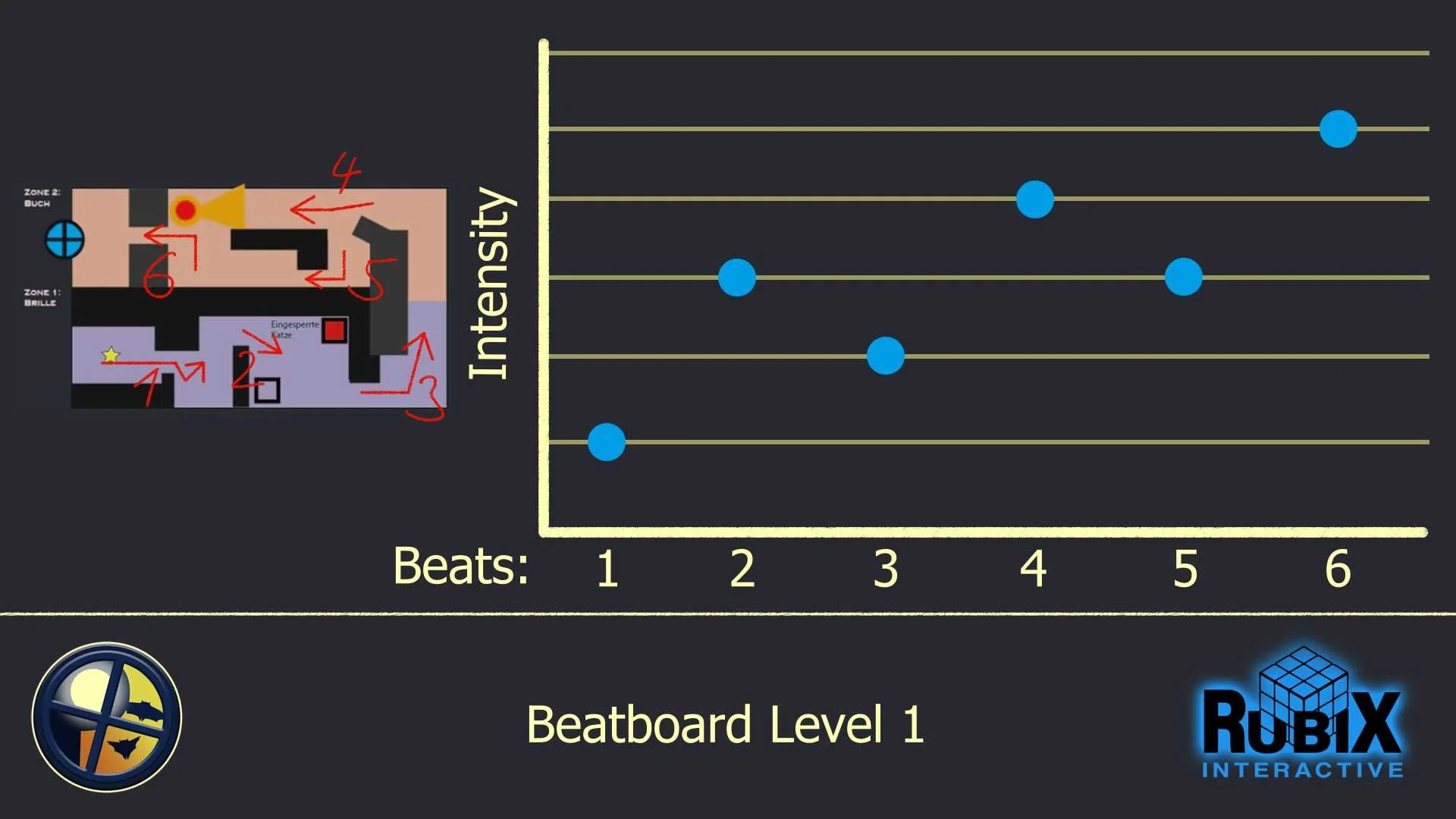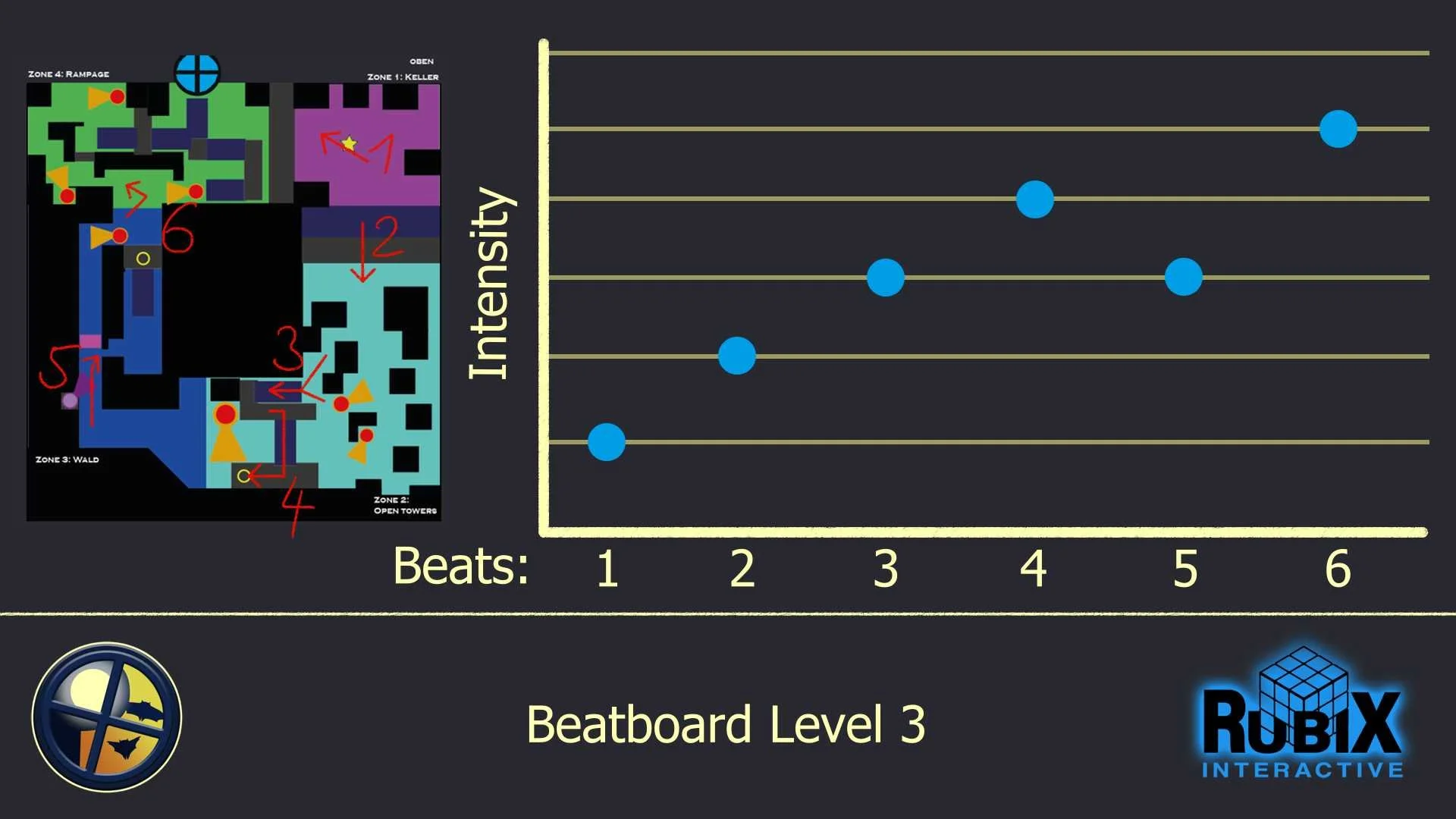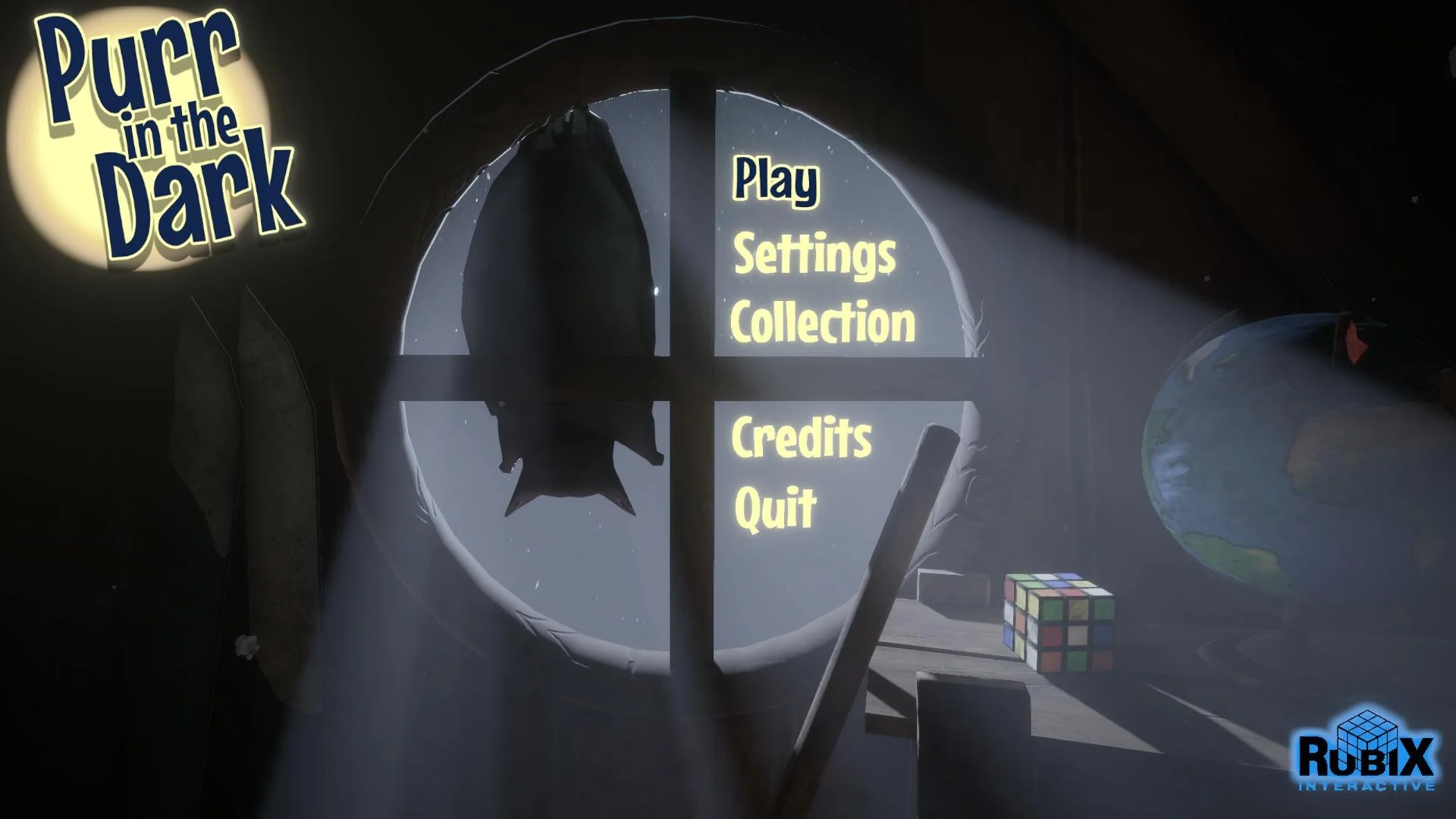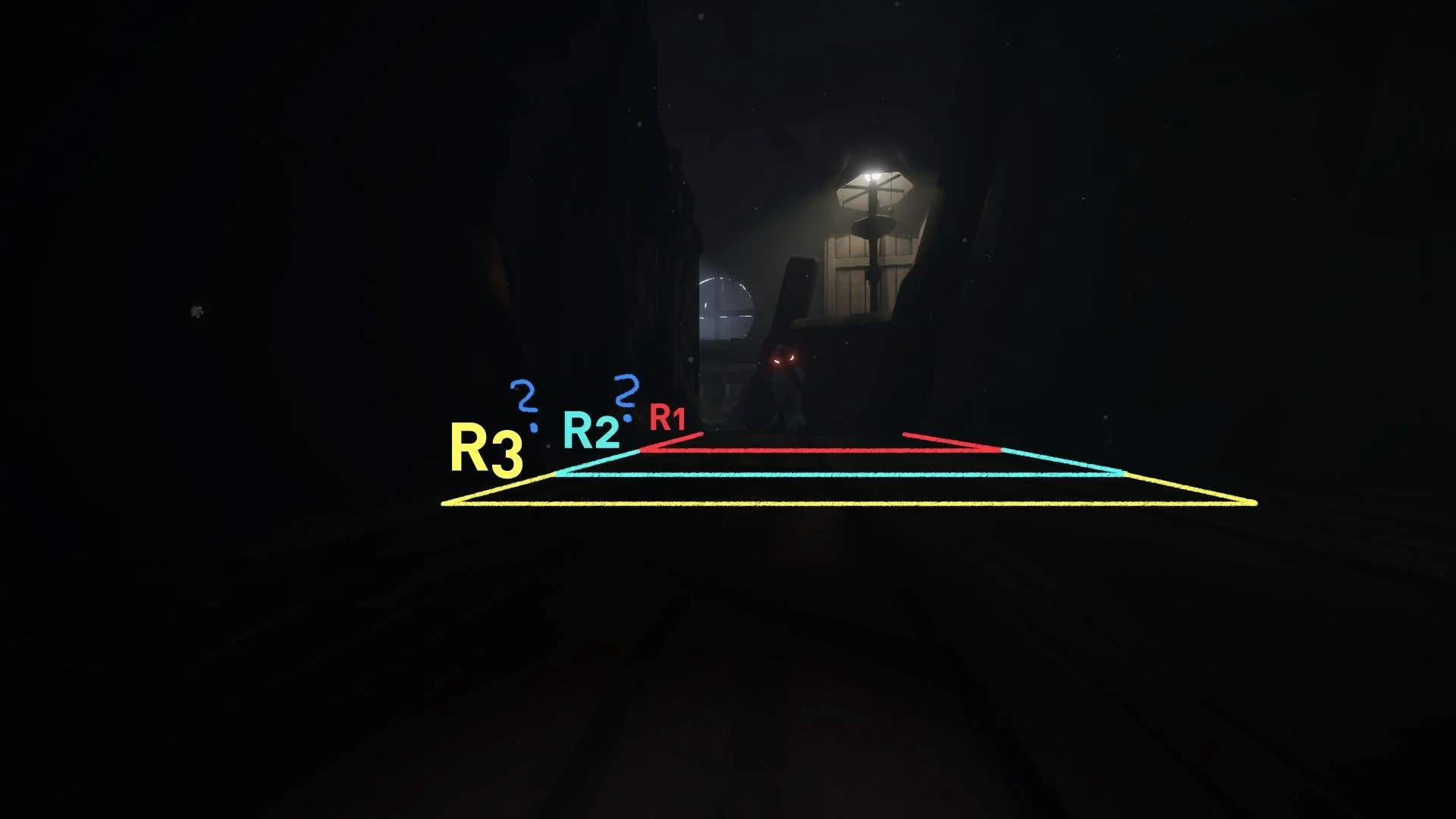Game Summary
Purr in the Dark is a 3D stealth game where you play as a lost flying fox pup navigating dark attics to find your mother. Use echolocation to briefly reveal your surroundings and outsmart lurking cats as you explore this tense, atmospheric world.
Responsibilities
Designed 3 major levels (Tutorial, Stealth Intro, Bridge)
Set Dressed 3 levels
Concepted, Whiteboxed, User Tested levels
Led Level Scripting, Layout Planning, Encounter Design, and pacing Structure
Created Game Design/Level Design Documents
Created Features
Planned and Structured Project with SCRUM
Managed a 6-person team; balanced scope and systems
Created Feature and Asset Cards for Cross-Disciplinary Collaboration
Lit the level for several different lighting situations
Details
Team Size: 6 people
Genre: First-Person Echolocation
Setting: Atmospheric Navigation through a dark attic
Level Duration: 12-17 minutes
Role: Lead Level Designer, Project Manager
Development Time: 13 Weeks
Engine: Unity Engine
Trailer
Purr in the Dark on Itch io
Level 0 (Tutorial) - Sound as Sight
Player starts in a rectangular room facing away from the goal, encouraged to use echolocation to orient themselves.
A lit-up area behind the starting point visually attracts the player, subtly teaching them to look around for environmental cues.
The lamp’s position, enhanced by light sources, reinforces correct directionality while combining visual guidance with echolocation practice.
Straight hallway design introduces a hidden collectible, encouraging exploration beyond the critical path while still using traversal mechanics.
Goal is revealed but blocked, prompting the player to search for alternate routes among parallel shelves in the new section.
Player ascends ramps leading to the window, reinforcing vertical traversal and concluding with reaching the mother bat.
Level 1 (Enemy Intro) - Stealth by Instinct
Straight corridor with a visible goal serves as an initial landmark, giving players a sense of direction and clarity.
Introduction of the first enemy (cat) in its box builds tension; spotlighted empty box later creates player curiosity and uncertainty.
Narrow corridor with scattered assets increases anxiety, as players are unsure where the hidden threat may appear.
Enemy blocks the direct path, forcing players to identify and take an alternate route, reinforcing observation skills.
Reduced intensity as the cat’s location is known, allowing players to safely navigate around while planning their movement.
Final close encounter with the enemy heightens tension again, followed by a climb to the goal for emotional release.
Level 3 (Bridge) - Mastery through Movement
Initial view of the goal is blocked by environmental layout, requiring a slight 30-degree turn and ramp traversal to progress.
Entry into the "forest" section filled with assets and two hidden enemies encourages careful navigation and echolocation scanning.
Discovery of a vertical hidden ramp provides an alternate path around an enemy, teaching verticality in level design.
Bridge segment lets the player observe an alternate lower path and the enemy they avoided, enhancing spatial awareness.
High-stacked package abyss increases tension through precarious paths and hidden enemies, with light guiding toward the attic door.
Final section forces precise navigation through two enemies while abandoning the earlier easy route, fully testing echolocation mastery.
Beatboard
Concept vs In-Engine

Concept Level 0 - Tutorial

Level 0 In-Engine

Concept Level 1 - Stealth Intro

Level 1 In-Engine

Concept Level 3 - The Bridge
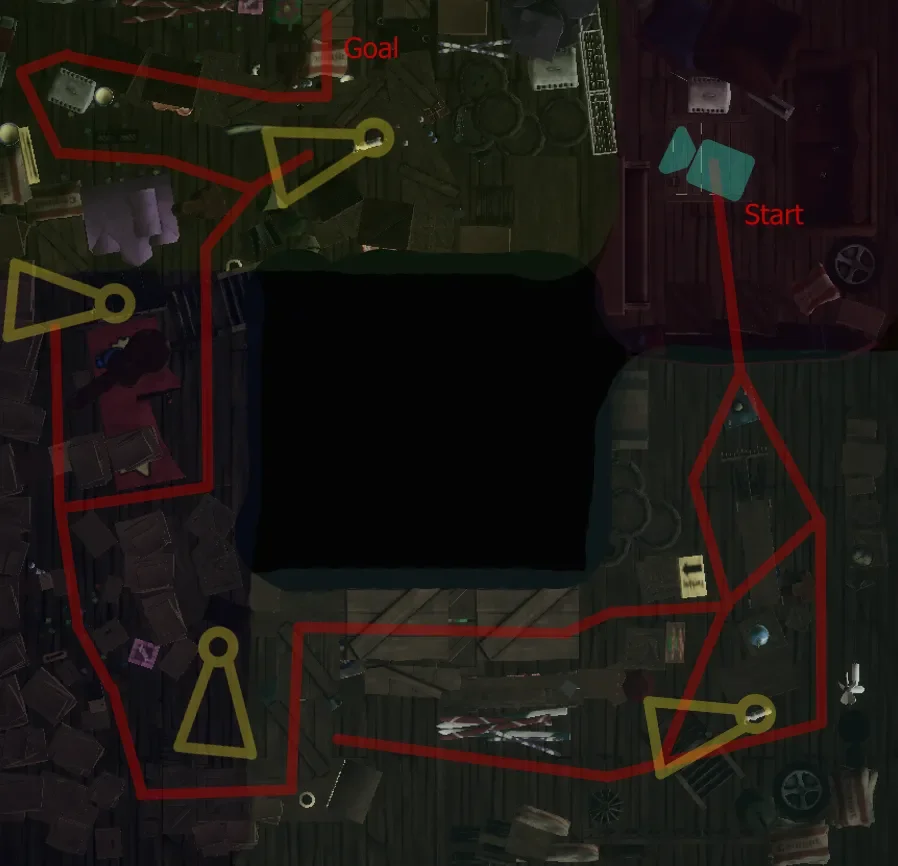
Level 3 In-Engine
Target Group Personas
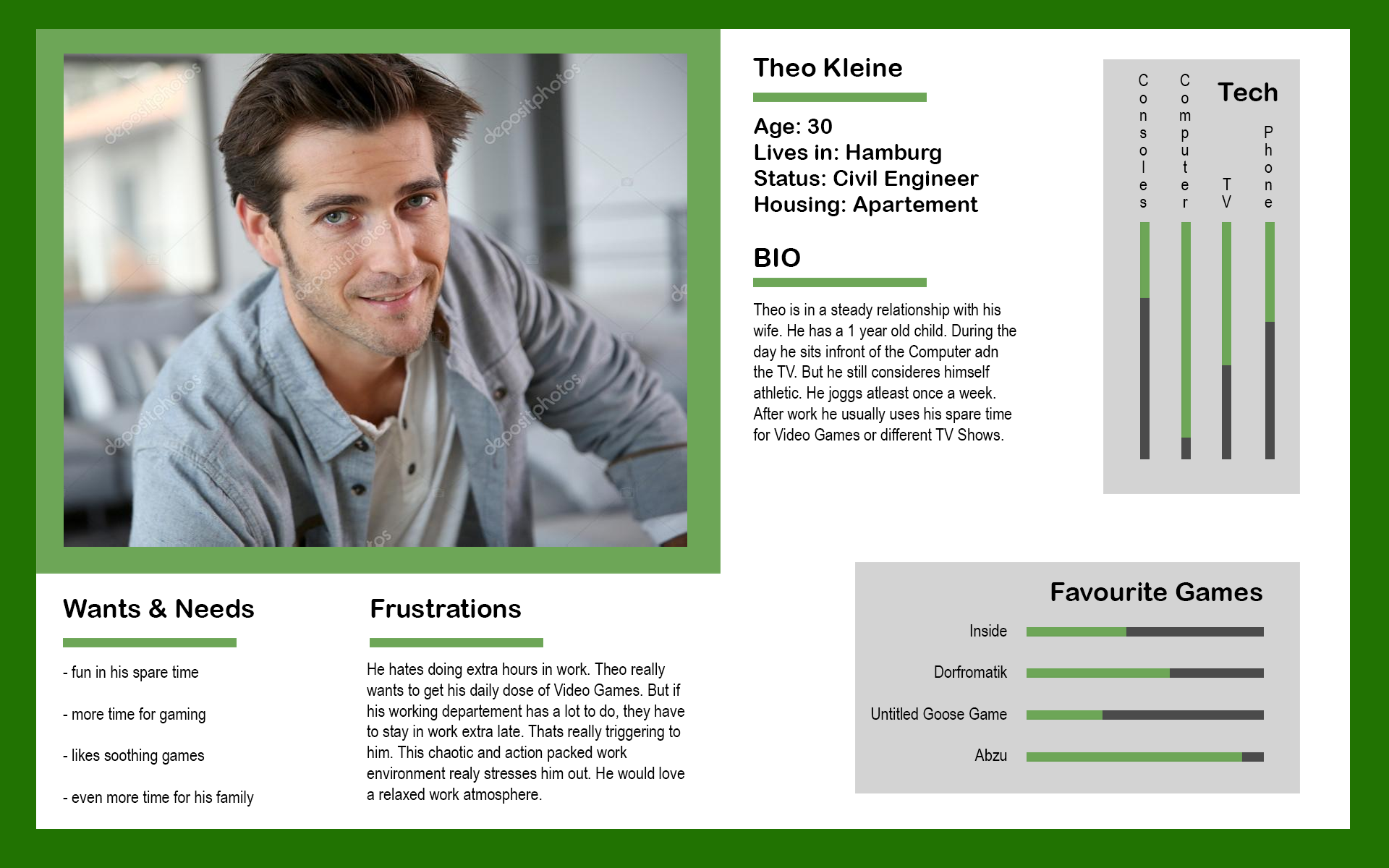
Persona 1
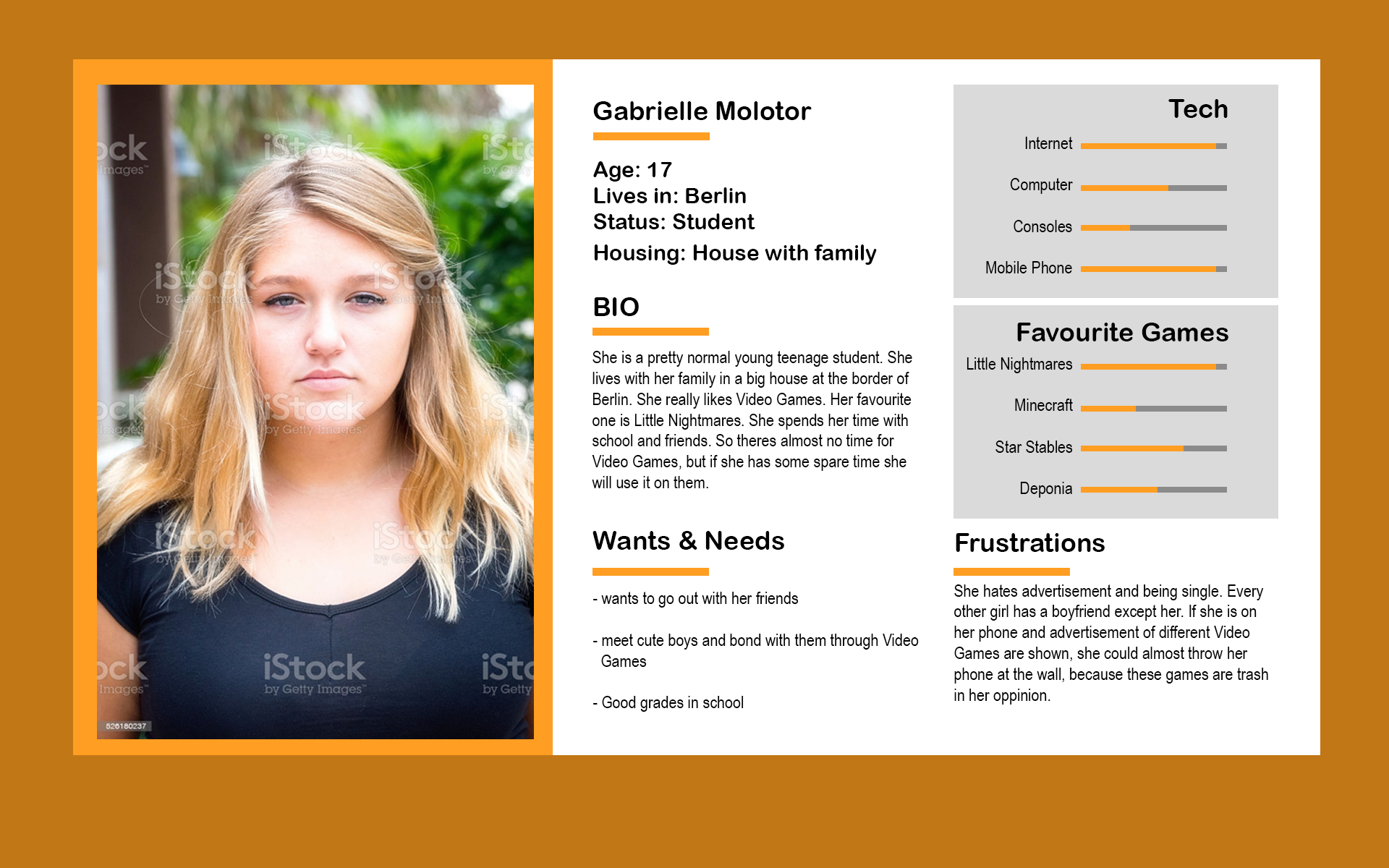
Persona 2
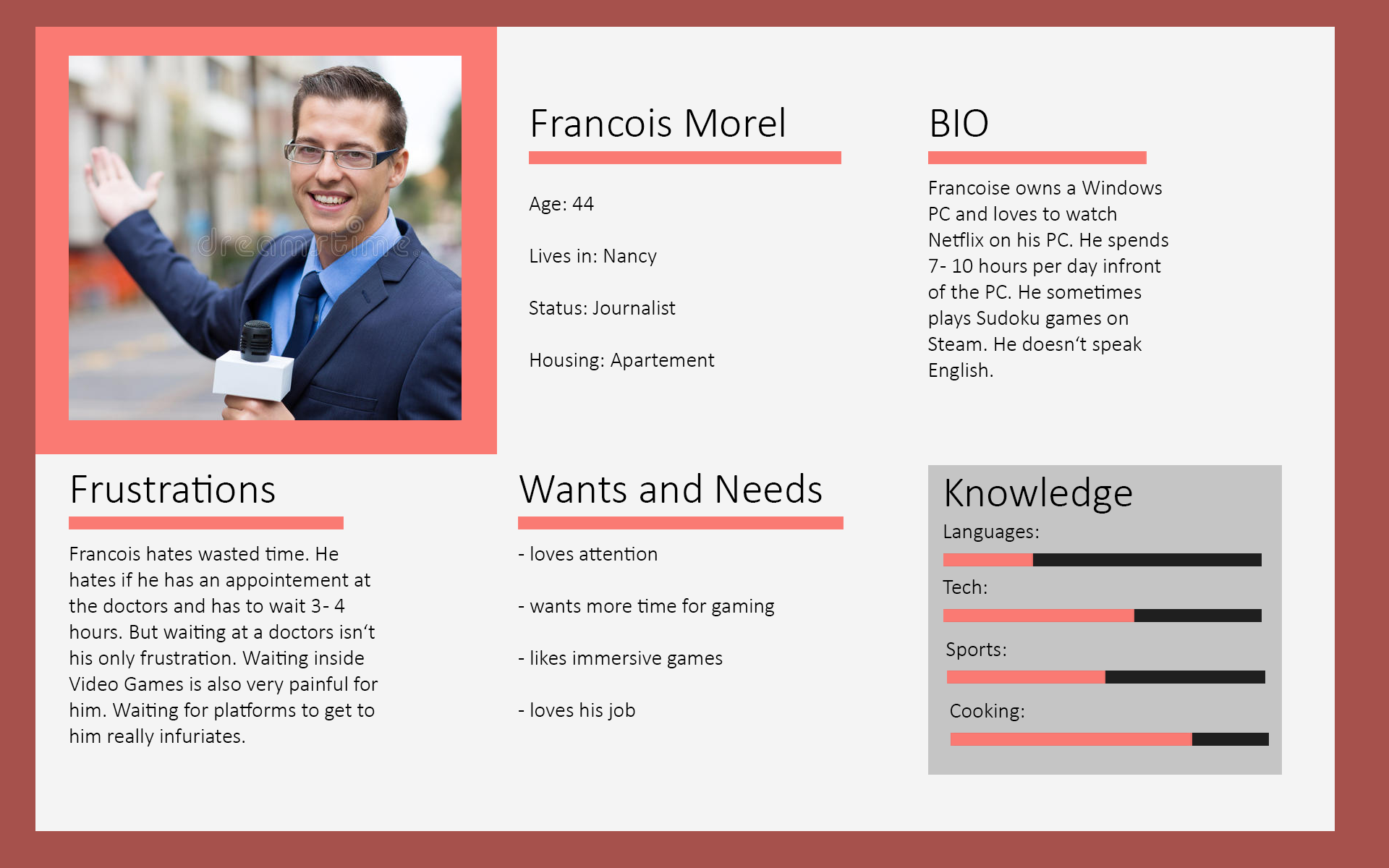
Persona 3

Persona 4
Systemic Level Design Thinking
Multi-signal design: Combined light, sound, and geometry to influence player perception and emotional pacing.
Traversal as narrative: Every loop, choke point, or vista was tied to stealth psychology: "What do I know?", "How do I move?", "What do I risk?"
Mechanic-integrated layout: Collaborated with programmers to develop a custom “Echo Occlusion Volume”system that shaped the
echolocation space dynamically.Gameplay-readability first: Prioritized intuitive communication through layout rather than HUD, ensuring stealth tension through level logic alone.
Cross-Disciplinary Collaboration
To ensure design goals were executed faithfully across departments, I created Feature Cards and Asset Cards:
Feature Cards: Defined mechanic behaviors, designer intent, input/output
triggers, and implementation details (e.g. dynamic light sources that influence
stealth readability).Asset Cards: Provided prop usage context, placement guidelines, silhouette
importance, and level-readability tiers for environmental storytelling props.
This helped:
Artists align visuals with gameplay needs (e.g. using contrast and shape for stealth cues).
Programmers prioritize systemic features (e.g. echo occlusion triggers, light-based AI states).
Maintain a design-driven pipeline while respecting production constraints (e.g. modularity, memory budgets, shader cost).
Echolocation Mechanic Intro
Echolocation emits a soundwave revealing the dark surroundings with glowing outlines.
The first area introduces this mechanic in a safe space, letting players experiment freely.
Level layout encourages reliance on echolocation to navigate and orient.
Limited vision and immediate feedback teach players its role as the primary tool.
Level Descriptions
Level 0 - Tutorial
Light as Attention
Light sources attract the player’s eye and guide movement in the dark.
They reduce the need to constantly use echolocation by offering clear visual cues.
Each light functions as a small tutorial, showing players where to focus.
The mix of lighting and echolocation keeps exploration engaging and dynamic.
Goal in Sight
The goal is placed in view but remains unreachable, sparking curiosity.
Its green color highlights it as an important, safe landmark.
Shelf pathways force navigation while keeping the goal visible for orientation.
Constant sightlines train players to use landmarks for spatial awareness.
Level 1 - Enemy Introduction
Enemy Introduction
The first enemy is staged at the end of a narrow corridor to build tension.
Red glowing eyes and matching shader enhance its threatening presence.
Seeing the enemy trapped in a box gives players a brief sense of relief.
The next empty, lit-up box signals danger, raising tension again.
Enemy Reveal
The enemy appears freely roaming in another corridor, escalating danger.
The layout mirrors the first encounter, reminding players of earlier tension.
Ignoring enemy signals leads to death, teaching caution and observation.
This section transitions from safe learning to actual threat.
Alternate Paths
Facing a blocked path, players must search for an alternate route.
This route is harder to spot, applying the “teach, test, twist” rule.
Tension lowers once the enemy is left behind but rises again near the end.
The path closes back to the enemy before a final escape to the goal.
Level 3 - The Bridge
Hidden Everywhere
The “forest” is cluttered with alcoves where threats could appear anytime.
This noisy layout keeps players tense and reliant on echolocation.
A large central column serves as a strong landmark amid the clutter.
The mix of confusion and orientation heightens spatial tension.
High Up Vista
After the noisy section, a bridge reveals a vista of stacked package towers.
The fractured canyon-like path contrasts the open area, signaling danger.
Narrowing spaces create vulnerability, with threats possibly around corners.
This moment controls pacing, balancing openness with suspense.
Finding more Routes
The direct path to the goal is blocked by an enemy, forcing detours.
Players must find alternate routes with multiple ramps and twists.
The goal stays in sight, helping maintain orientation through complexity.
Navigation tests mastery of movement while avoiding enemy patrols.
Level 1 Walkthrough
Level 3 Walkthrough
Level 0 Walkthrough
Issues, Iterations and Learnings
Issues
Unclear Layout and Empty Traversal
Level 3’s layout lacked clarity and included long stretches of unengaging traversal, which reduced pacing and player engagement.
Passive Tutorial Experience
While the tutorial introduced mechanics correctly, its pacing felt static and unexciting, leading to disengagement.
Revise Tutorial Design
Redesigned the tutorial to include a 180° camera reveal, making the mechanic discovery feel more active and memorable.
Enemy Readability Problems
Enemy aggro ranges and attack triggers were unclear. Does the enemy attack at R1, R2, or R3? Did the enemy see/notice the player already?
Solutions
Improve Level Flow
Reworked traversal by adding strategic asset placement and designing denser encounter loops. This reduced downtime and guided players more naturally through the environment.
Enhance Enemy Communication
Adjusted enemy animations, added clearer audio cues, and introduced color highlights to signal aggro thresholds, improving fairness and readability.
Learnings
Designing around a unique sensory mechanic like sonar requires balancing clarity and engagement to avoid overwhelming the player.
Traversal without meaningful activity quickly becomes repetitive, even with strong mechanics.
Enemy readability (animations, audio, visual cues) is critical for delivering fair and satisfying challenges.
Overly noisy environments reduce navigational clarity; subtlety enhances long-term engagement.
Level complexity should evolve with the core mechanic—introducing pacing variation, stronger visual hierarchy, and shorter encounter loops keeps the mechanic fresh and rewarding.
Walkthrough
Trailer
More Screenshots
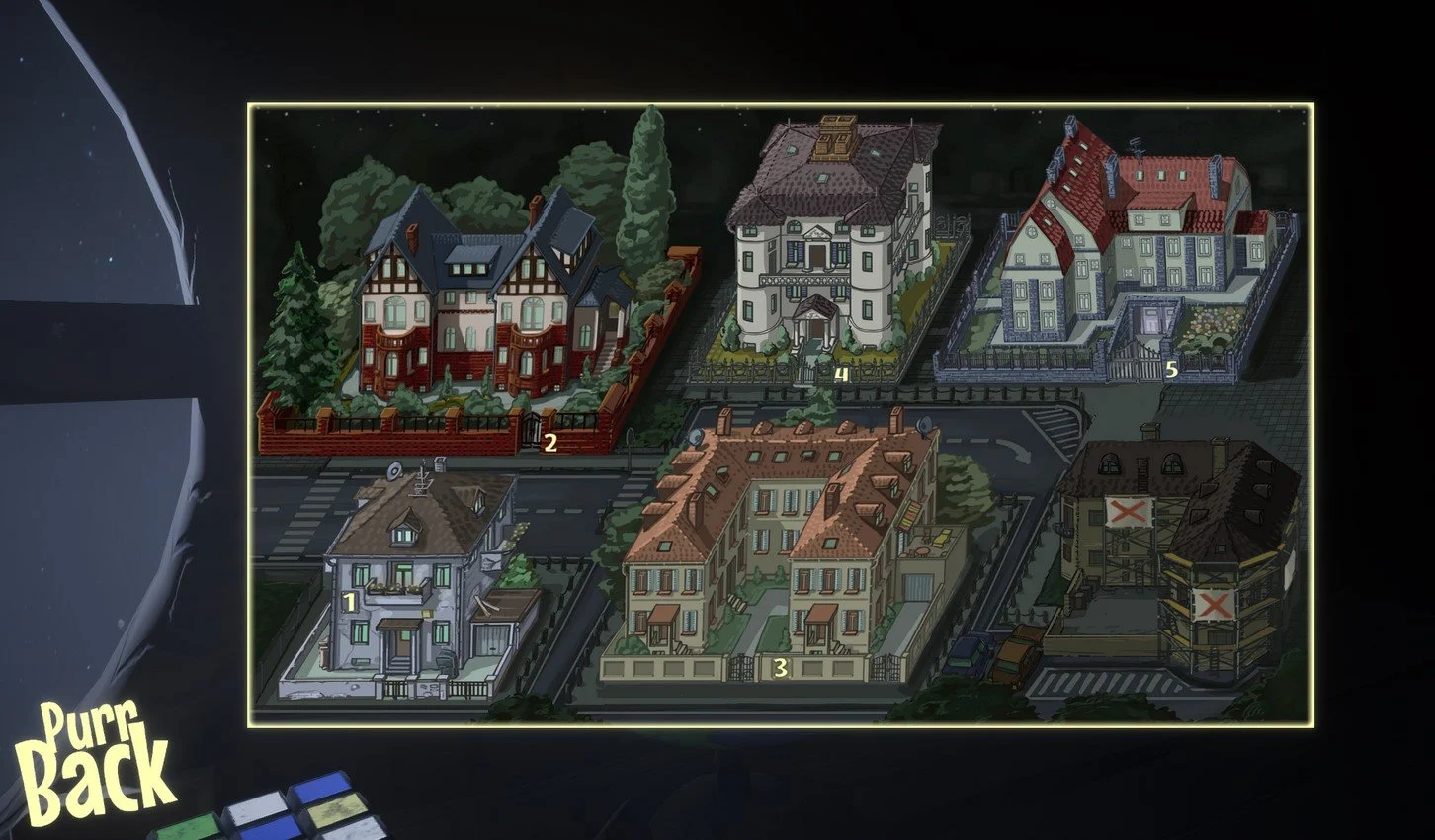
Level Selection
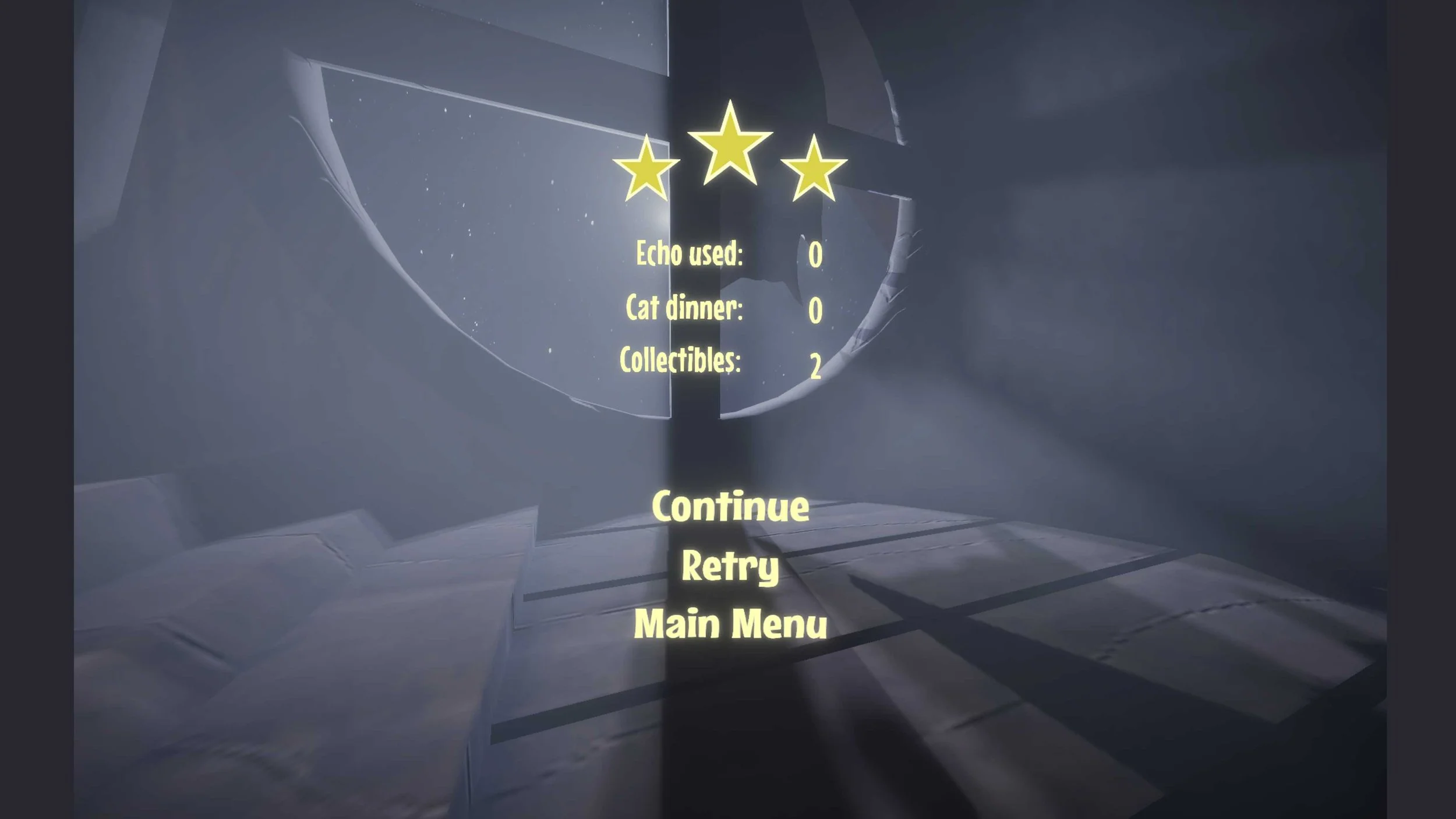
Level Goal

Level 1 - Goal
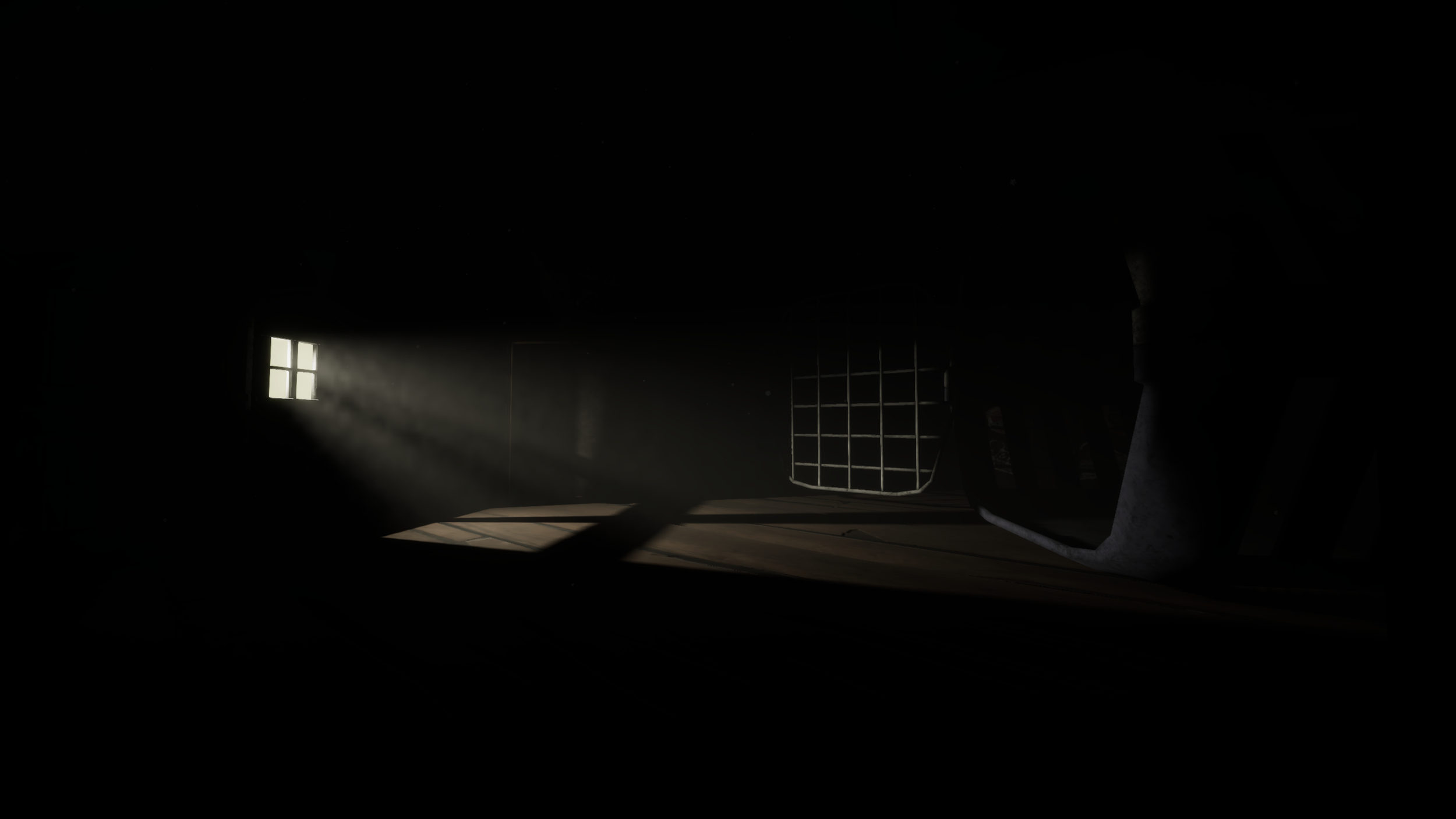
Level 1 - Enemy Storytelling
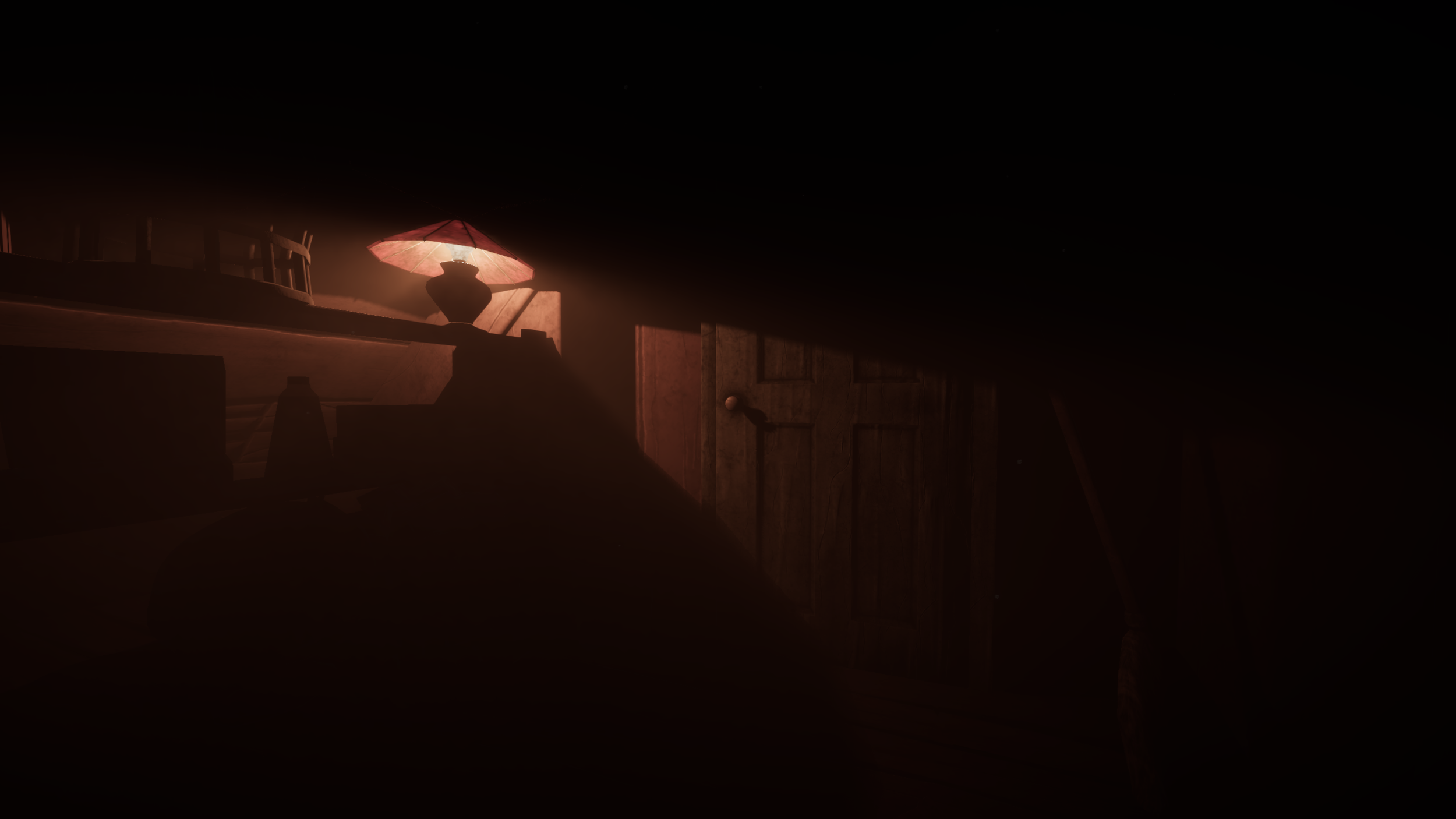
Level 3 - Danger Lurks
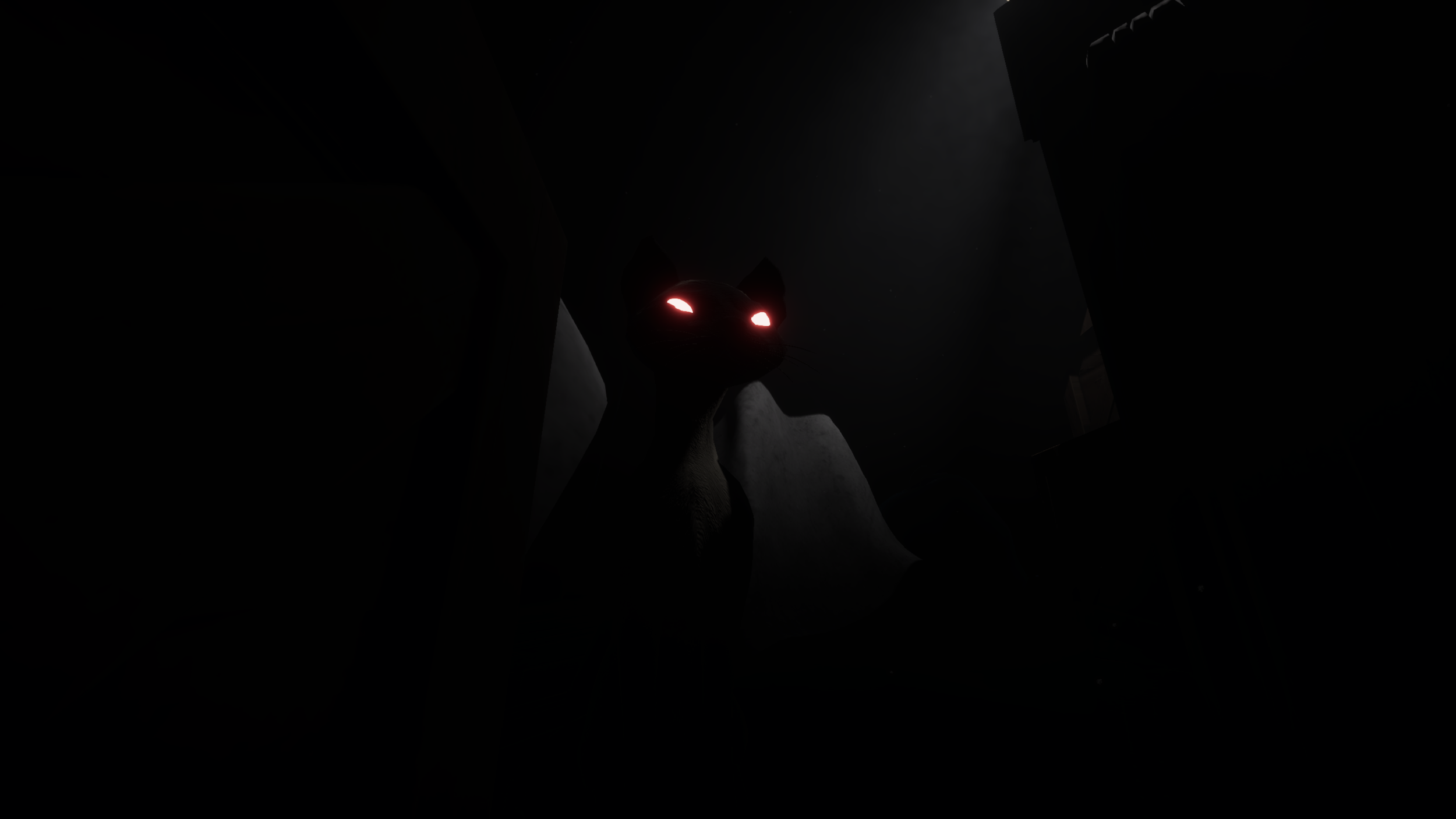
Enemy Waiting
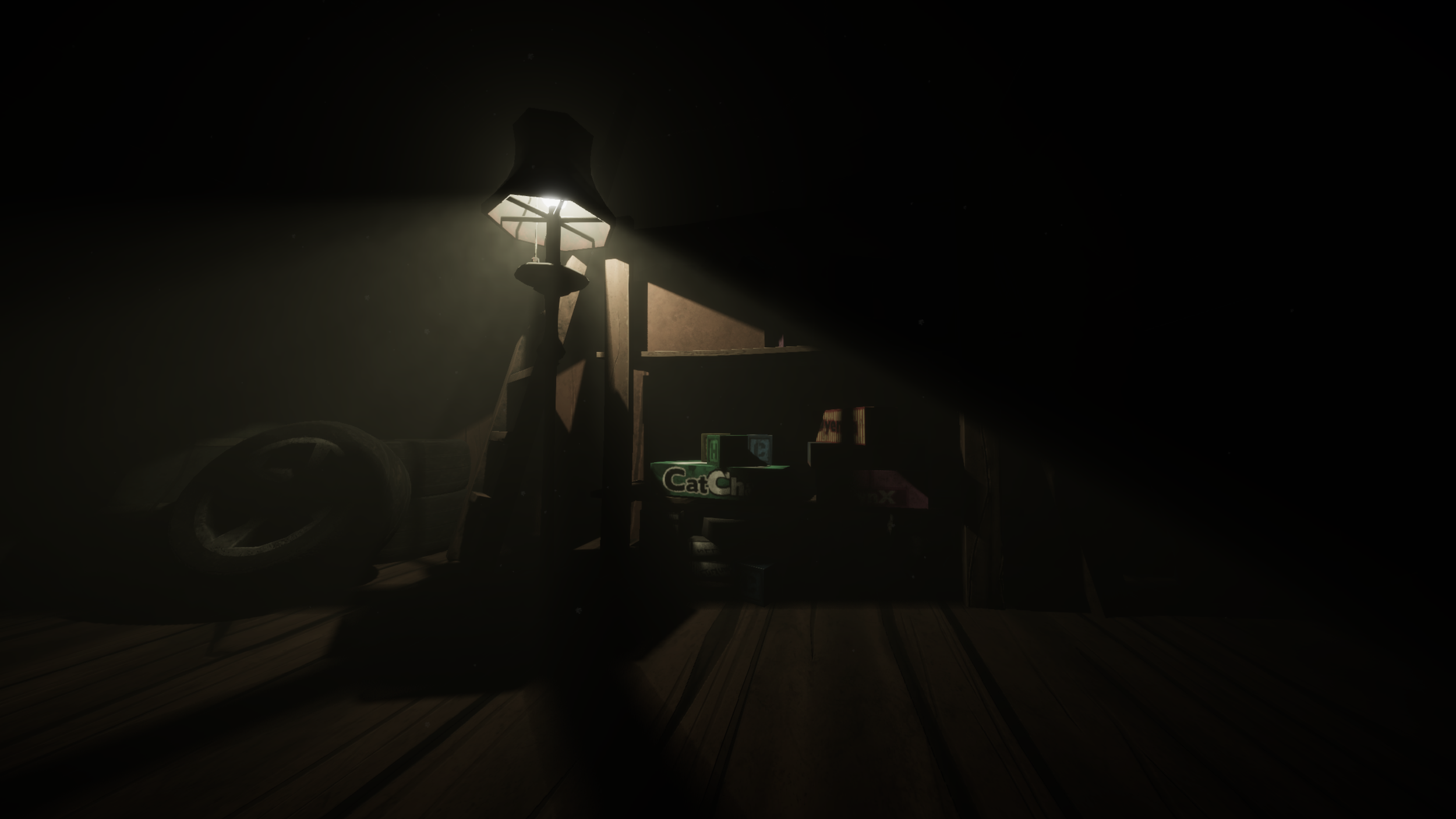
Level 0 - Light as Guide

Level 3 - Big Lamps as Landmarks

Level 1 - Echolocation

Level 3 - Shelves
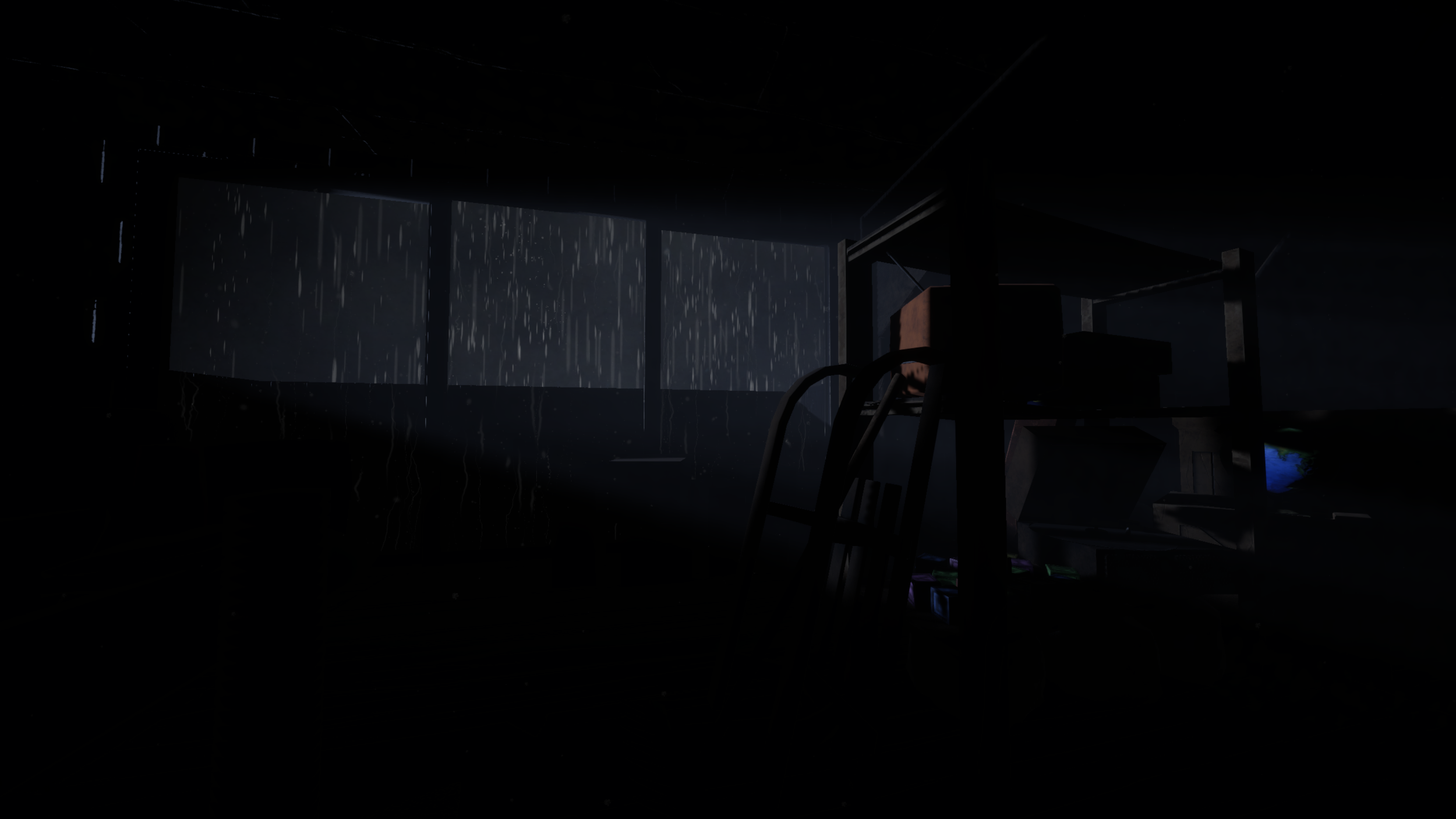
Level 3 - Immersive Rainy Window


